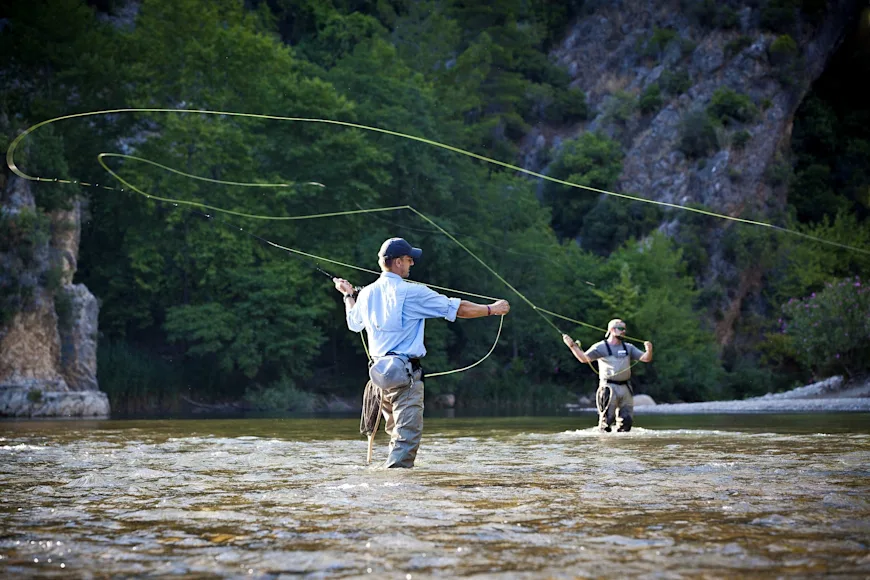_We may earn revenue from the products available on this page and participate in affiliate programs. Learn more ›
_
Best Overall, Saltwater

Abel SDS 9/10
LEARN MORE
Summary
The Abel SDS has a fully sealed multi-disc drag, more than 20 pounds of drag pressure, an anodized aluminum construction, and an original-owner lifetime warranty.
Best for the Money, Freshwater
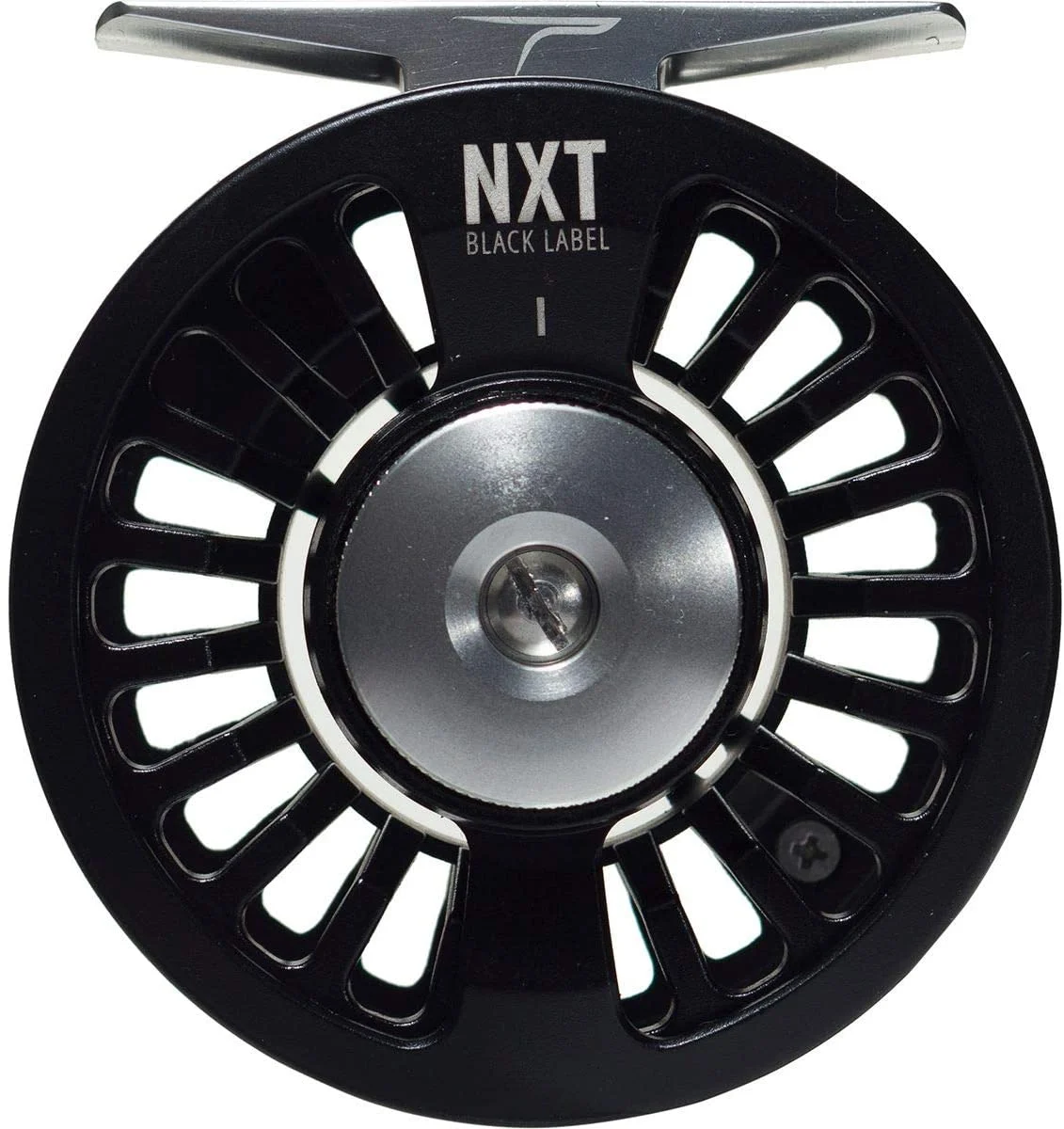
Temple Fork Outfitters NXT Black Label II
LEARN MORE
Summary
The NXT Black Label II offers a smooth stacked disc drag for right around C-note, making it an economical choice for trout, bass, and panfish.
Best Trout Reel
Hatch Iconic 4+
LEARN MORE
Summary
Hatch has quickly become a top name in high-end fly reels, and the Iconic is the eagerly anticipated successor to the much-admired Finatic Gen II.
is unique among rod-and-reel angling, in that you can cast, set the hook, and land a fish without ever using the reel. In fact, that’s quite common—even in saltwater. I’ve landed many a schoolie striped bass by simply stripping in line. Still, we’re almost always hoping to hook a big fish, and when we succeed, you’ll want the best fly reel possible; one with a smooth drag is key to bringing the fish to hand. If an angry multi-pound rainbow trout makes a panicked run downstream, a well-constructed fishing reel
will give line when necessary and allow you stop and turn the fish when the time is right.
A fly reel is a pretty simple device. Basically, it’s a spool with a handle that’s held in a frame with a spindle. The best fly reels are masterpieces of craftsmanship, built for lifetime use, and their prices reflect that. But at the other end of the scale, a fly reel’s simplicity of design makes good quality possible at an affordable price. As with most sporting gear, there are more good reels available now than ever. Let’s take a look at a few best fly fishing reels for freshwater and saltwater use.
Saltwater Fly Reels
Best Overall: Abel SDS 9/10
Best Mid-Price: Cheeky Limitless 425
Best for the Money: Waterworks-Lamson Liquid -9+
Freshwater Fly Reels
Best Trout: Hatch Iconic 4+
Best Mid-Priced: Orvis Hydros II
Best for the Money: Temple Fork Outfitters NXT Black Label II
How We Picked The Best Fly Reels
I’ve owned a bunch of reels since the mid-1980s, and I’ve been surprised a few times—by having to send pricier models back for repairs, and by how well lower-priced units have held up, especially on rock jetties while night fishing along the Atlantic coast.
In assembling this selection, I looked at the top reel makers at the various price points and considered features, construction and materials. I was pleased (but not surprised!) to find many great reels by other brands not included here. Today’s fly angler has a lot of great options to choose from.
The Best Fly Reels for Saltwater: Reviews & Recommendations
Best Overall: Abel SDS 9/10
Best Overall

Specs
Spool diameter: 4.2 inches; Width: 1.2 inches
Holds 250 yards of 20-pound backing
Quick-change spool
Pros
Durable aluminum build; stainless and carbon composite drag discs
Suited for a variety of gamefish—from bonefish to tarpon
Sealed against saltwater corrosion
Cons
A heavy reel, weighing 1 pound
Expensive
Abel has built a sterling reputation for quality since its founding in 1988. The SDS stands for Sealed Drag Saltwater, a critical feature for inshore and offshore fishing. The 9/10 model’s drag will protect light tippets for smaller species like bonefish, but is also strong enough to turn a tarpon. (By the way, you can add a Grateful Dead “Steal Your Face” drag knob for an extra $200.) Abel reels are designed and made in Montrose, Colorado.
Best Mid-Priced: Cheeky Limitless 425
Best Mid-Priced
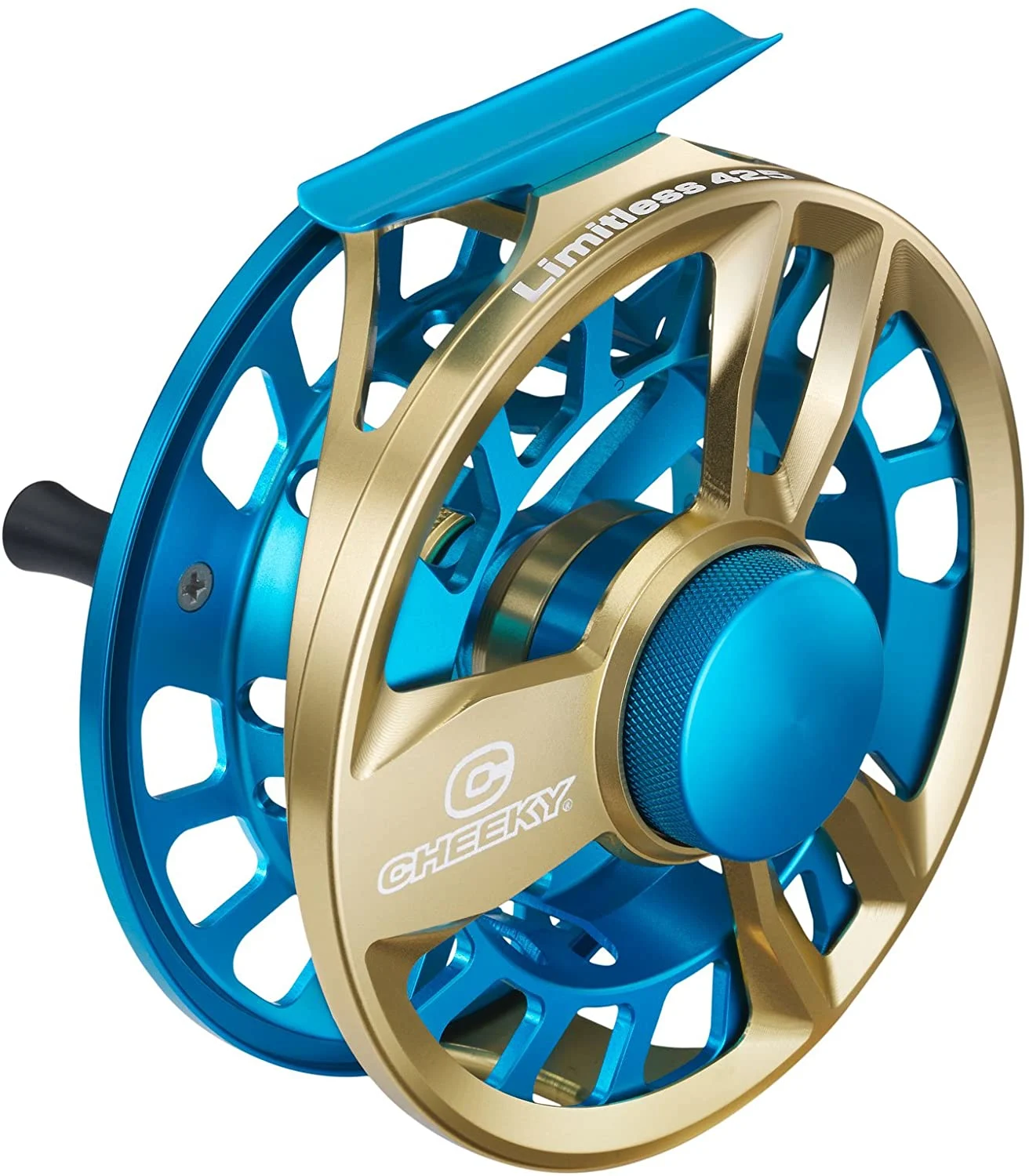
Specs
Spool diameter: 4.25 inches
Accommodates line weights 7-10
9-weight holds 375 yards of 30-pound gel-spun backing
Pros
Fully sealed gasket drag system
Weighs just 7.5 ounces
Integrated reel seat distributes torque
Cons
Price is reasonable—but not cheap
Whimsical colors don’t appeal to everyone
Anglers who enjoy hearing a reel sing won’t like the silent drag
in 2009 to build good gear in fun colors. They run an annual wade-fishing tournament for striped bass on Cape Cod—the largest catch-and-release fly fishing tourney in the world. The Limitless 425 offers premium-reel features for half the cost of top-end fly reels. The fully sealed gasket drag eases worries about saltwater corrosion; the big, 4.25-inch diameter offers a large arbor for efficient reeling and less coil memory; and the beveled multi-axis machining provides structural strength while minimizing weight.
Best for the Money: Waterworks-Lamson Liquid -9+
Best for the Money
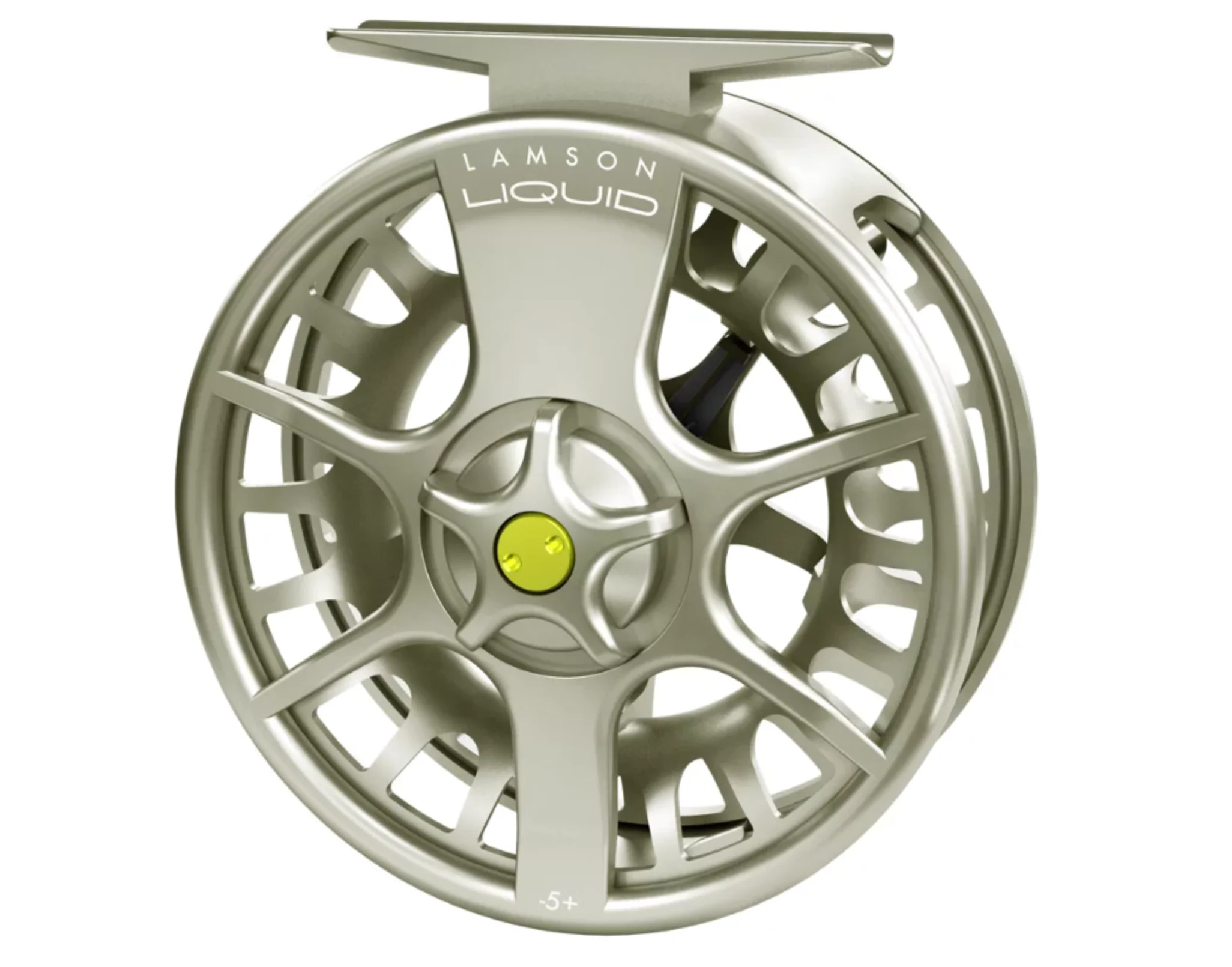
Specs
Spool diameter: 4.7 inches; Width: 1.4 inches
Accommodates line weights 8-10
Weighs 6.7 ounces
Pros
Sealed conical drag
Large arbor
Great price, plus a lifetime original-owner warranty
Cons
Cast; not machined
Polyurethane finish is subject to wear
OK, so it’s cast, not machined (actually some parts are machined). Aluminum is aluminum, and since its conical drag is sealed, the Liquid will hold up just fine in the brine. The lightweight design is a godsend for a long day on the boat or night in the surf. The conical drag system is the same one used on Lamson’s more expensive reels, and it’s a clever design, with the same amount of friction surface as a disc drag wrapped into nesting cones that take up less space and consequently weighs less. Users find it smooth and capable.
Lamson maintains the die casting process allows for curves and corners that are hard to achieve with machined aluminum. And there’s no denying the attractive price. Consider purchasing the 3-pack
—a reel with two spools, plus a carrying case. That way, you can quickly swap between an intermediate line a sinking line.
Best Fly Reels for Freshwater: Reviews and Recommendations
Best Trout: Hatch Iconic 4+
Best Trout
Specs
Larger arbor
Spool diameter: 3.4 inches; Width: .9 inch
Accommodates line weights 4-6
Weighs 5.3 ounces
Pros
Smooth-Running Carbon-Filled Drag Disc
Numerous Upgrades from Finatic Gen II
Anodized Finish, Four Colors
Cons
Machined-on foot can’t be replaced if bent
Hatch is widely seen as one of the premier reel-makers, and its newest model maintains the high standards. The carbon-filled multi-disc drag is improved over the Finatic for better heat dissipation and smoothness, and it’s built into the frame, not a cassette. The reel is cut to exacting tolerances from a block of solid aluminum and Type II anodized. The foot isn’t screwed on; it’s part of the machined frame. That makes for a solidly built fly reel—but if you drop it on a rock and bend it, you’ll need to send the whole reel in for repair. Fortunately, there’s a non-transferable lifetime warranty.
Best Mid-Priced: Orvis Hydros II
Best Mid-Priced

Specs
Large arbor
Reel diameter: 3.4 inches
Accommodates line weights 3-5
Weighs 5 ounces
Pros
Fully sealed drag
Fully machined aluminum construction
Rounded Foot won’t kink leader
Easy-grip drag knob
Cons
The spool-release lever isn’t for everyone
The Hydros is imported, not American-made, which probably accounts for its great price point. Still, it’s an Orvis fly reel—made of machined aluminum with a Type II anodized finish. It has a smooth carbon-and-stainless-steel drag system with no startup inertia. The drag knob that drew complaints on earlier models has been improved, as has the seal of the drag itself. And the foot stem has no corners to put kinks in a leader that gets wrapped around it. The Hydros II is also lighter than its predecessor, the Hydros SL.
Best for the Money: Temple Fork Outfitters NXT Black Label II
Best for the Money

Specs
Large arbor
Reel diameter: 3.4 inches
Accommodates 5-weight line and 100 yards 20-pound backing
Weighs 4.6 ounces
Pros
Stacked alternating disc drag
Aluminum construction
Screw knob spool release
Easy-grip drag knob
Cons
Cast, not machined
In case you hook up with a lunker brown trout, the TFO NXT Black Label is equipped with a smooth, stacked, alternating-disc drag with minimal startup inertia to keep the situation under control. The reel is well-ported for lightness but plenty strong. Spare spools cost
aren’t expensive, making it easier to keep a selection of lines ready for the conditions you face. A nice neoprene soft case is provided, too.
What to Consider When Choosing a Fly Reel
Fly fishing reels differ widely in line capacity, material of construction, and operational design. Here’s how to sort them out to find the best one for you.
Size
Reels are organized by line weight: The bigger the line, the bigger the reel. A 5-weight line is considered the all-around size for freshwater fishing, generally suited to trout and bass. Lines in size 2 or 3 are for small-stream, backcountry trout or panfish. Sizes 6 and 7 lines (or even bigger) are for larger bass, steelhead trout, carp, and predators like pike and muskie. Saltwater fishing generally starts at Size 8 for species like striped bass, bluefish, bonefish, and snook. If you’re targeting big fish like adult tarpon, giant trevally, or sharks, you might need a line as heavy as 13.
Line size isn’t about pound-test; that’s determined by your leader and tippet. Rather, the sizes refer to weight and mass, with the bigger ones better able to cast heavy or wind-resistant flies, and to punch through wind.
Drag Design
As with drags on other types of reels, the drag on a fly fishing reel is a method of making it harder to pull line, and is used to control the runs of big fish. Lots of trout fishing is done with simple click-and-pawl reels that offer minimal drag, which sometimes needs to be supplemented by using your palm to apply pressure to the spinning reel spool—a fish-fighting technique known as palming. All of the reels in this roundup have disc drags, operated by tightening a knob that applies the brakes. The best drag systems avoid “sticky” startup inertia and allow the spool to spin smoothly, even under heavy pressure.
One other note on drags: When you store your fly fishing reel after a day of fishing, set the drag on its lowest setting. Minimizing the tension on the drag can help extend its lifespan.
Drag Seal
A drag system that’s sealed from the elements is helpful in freshwater—but in the salt, it’s essential. Saltwater and sand will quickly damage the components of your drag if it’s not sealed. In fact, even most freshwater reels, apart from the least expensive models, have sealed drags these days.
Construction
A few low-end reels are made of carbon fiber, but the majority are built of aluminum. Most are “machined,” or cut from solid aluminum, but some are still made by “casting,” or by pouring molten aluminum into a mold. There are a couple of cast-aluminum reels in this list, and they have more than enough precision and durability for their intended uses. Still, reels machined from bar stock aluminum generally have more exacting tolerances.
Left- or Right-Hand Retrieve
This is an old topic in fly reels: If you’re right-handed, should the reel handle be on the right side of the reel, so you can use your dominant hand to crank? Or should it be on the left, so you don’t have to pass the rod to the other hand to reel? I think most anglers reel with their non-dominant hand—myself included—but I’m also starting to think there is an advantage to reeling with the dominant hand and may change my reels over this season. Fortunately, all reels can be converted to whichever size reel you prefer.
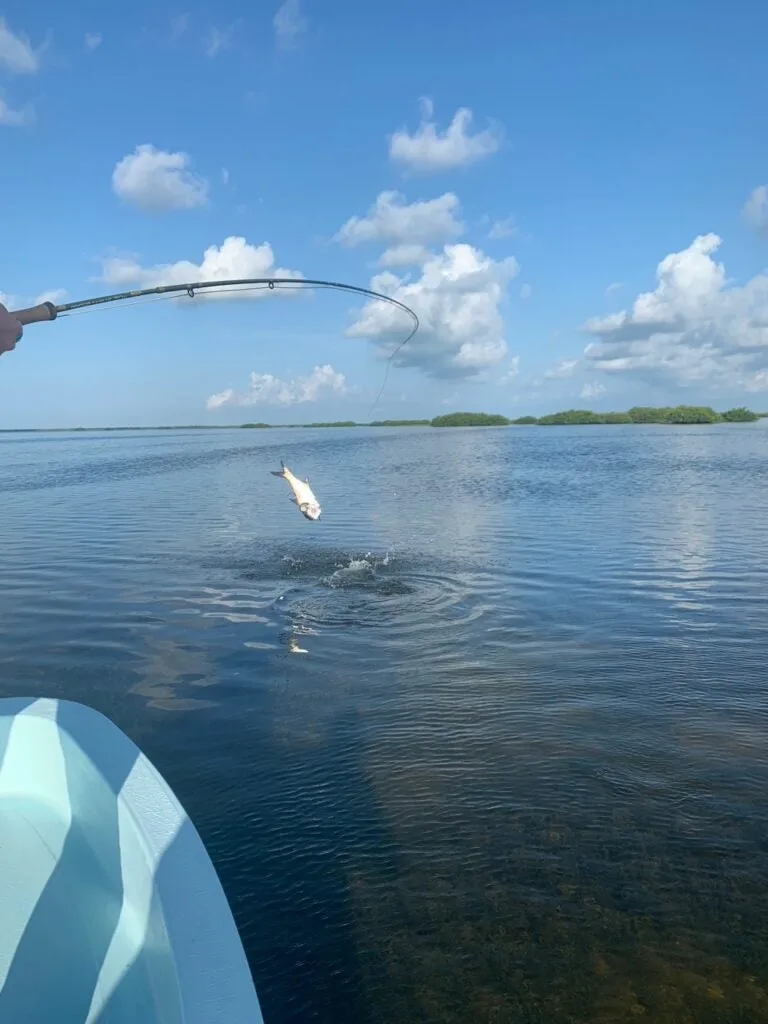
For saltwater species like tarpon, an essential feature on a fly reel is a sealed drag. Colin Kearns
FAQs
Q: How do I know what size fly reel to get?
Choosing the right size fly reel depends on what kinds of fish you want to catch. If most of your fishing takes place in creeks, rivers, lakes, and ponds, for species like bass, trout, and panfish, a reel for line size 5 or 6 is best. Lighter lines such as size 2 or 3 are fun for smaller trout in small streams, while a size 7 line is useful for larger freshwater fish like steelhead or pike. If you fish saltwater, choose a reel for a size 8 or larger line. The really big species like tarpon and sharks call for size 11-13 lines and reels.
Q: How much does a fly reel cost?
You can spend under $100 or over $1,000, but there are many very good fly reels in the $200-$300 range. If you can afford a reel in the $500-$600 range, you can get a great piece of gear that will last a lifetime.
Q: What is a good brand of fly reel?
The top reel brands include Abel, Tibor, Hatch, Ross, Nautilus, Bauer, and Lamson. General fly tackle brands, such as Orvis, Sage, Redington, and Temple Fork Outfitters also offer fine reels. Generally, you’ll get a good reel from any of the major fly-fishing brands, and with a basic amount of care and maintenance, you’ll enjoy them for years to come.
Best Fly Reels: Final Thoughts
Saltwater Fly Reels
Best Overall Fly Reel: Abel SDS 9/10
Best Mid-Price Fly Reel: Cheeky Limitless 425
Best Fly Reel for the Money: Waterworks-Lamson Liquid -9+
Freshwater Fly Reels
Best Trout Fly Reel: Hatch Iconic 4+
Best Mid-Priced Fly Reel: Orvis Hydros II
Best Fly Reel for the Money:**** Temple Fork Outfitters NXT Black Label II
It’s not uncommon for an angler to sit indoors, far from the fishing, and just spin the spool of his or her reel around in its frame, just to enjoy the smooth motion and exquisite engineering. The best fly reels are like that. Even the inexpensive ones are satisfying and cool. The pricey ones can be as impressive as a Swiss watch. On the water, there’s no feeling like knowing the fish you’ve hooked is too big to strip in by hand and needs to be put on the reel. That’s when the real excitement starts. A good reel assures that the excitement ends the way it should—with a nice fish in your net or your boat.
Why Trust Us
For more than 125 years, Field & Stream has been providing readers with honest and authentic coverage of outdoor gear. Our writers and editors eat, sleep, and breathe the outdoors, and that passion comes through in our product reviews. You can count on F&S to keep you up to date on the best new gear. And when we write about a product—whether it’s a bass lure or a backpack—we cover the good and the bad, so you know exactly what to expect before you decide to make a purchase.

